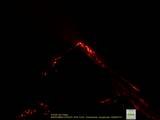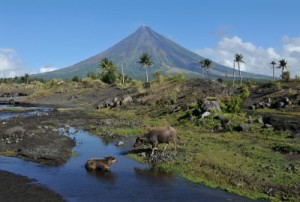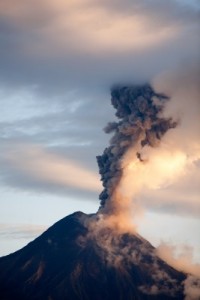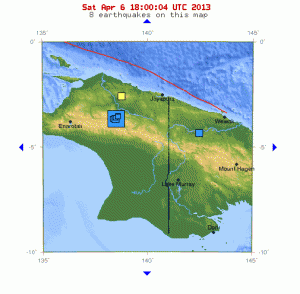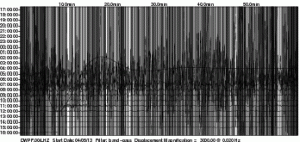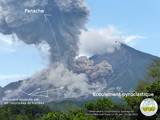
Eruption of Santiaguito volcano in Guatemala (webcam image: INSIVUMEH, annotated by Blog Culture Volcan)
Santiaguito Volcano – Guatemala
A major eruption occurred August 22, 2013. The top part of the Caliente lava dome collapsed and produced a series of relatively large pyroclastic flows and explosions. Ash plumes rose to elevations of 4 km (13,000 ft) in altitude.
The pyroclastic flows affected mainly the south, southeast and NNE sides of the volcano, but volcanic bombs from explosive activity were ejected up as far as 500 m (1,600 ft).
Fuego volcano – Guatemala
A surge of activity occurred overnight on August 19, 2013. Two active lava flows are heading towards Taniluya (on the western flank) and the Ceniza Canyon (on the southern flank). The lava flows have increased to 600 and 800 m (2,600 ft) in length, respectively.
Numerous incandescent avalanches are detaching from the lava flow fronts, and glowing blocks of rock are reaching past the vegetation limits.
Explosive activity from the summit crater has remained weak, with only few strombolian type explosions with incandescent bombs ejected up to 150 m (500 ft), and ash plumes rising up to 400 m (1,300 ft) in height.
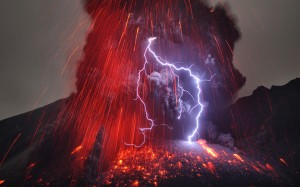
Strong explosions are occurring at Sakurajima Volcano – NASA
Sakurajima Volcano – Japan
On August 21, 2013, Sakurajima had at least eight explosions with ash plumes rising up to 4.5 km (15,000 ft) altitude that drifted over Kagoshima city causing ash fall. The volcano has been in an elevated state of activity during the past weeks. A significant hot spot suggests that magma levels are high in the crater, and significant amounts of hot, fresh deposits are visible on the flanks of the volcano.
The next day on August 22, 2013, a very large explosion occurred (one of the largest this year). It produced a mushroom shaped ash column that rose about 6 km (20,000 ft) in altitude that drifted over Kagoshima.
Kizimen Volcano – Kamchatka, Russia
The lava dome continues to grow at the top of the volcano, and rockfalls and small pyroclastic flows can be seen glowing from the volcano. Ash plumes are intensifying at the volcano, and webcams have spotted a new prominent spine being extruded from the top of the cone.
Iliwerung Volcano – Lesser Sunda Islands, Indonesia
A submarine eruption occurred Thursday, August 23, 2013 in Indonesia. The alert level of Iliwerung volcano was raised from 1 (normal) to 2 (watch) following increased seismic and visual activity from an underwater flank vent called Gunung Hobal.
Iliwerung volcano forms a peninsula on the south coast of Lembata (Lomblen) Island, East Indonesia. Mount Hobal (Gunung Hobal) is a submarine flank vent of Iliwerung located about 800 m (2.600 ft) off the coast. Iliwerung has had several historic eruptions during which several temporary islands were formed.
White Island Volcano – New Zealand
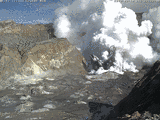
Phreatic explosion at White Island, August 23, 2013 (GeoNet webcam)
A small phreatic or hydrothermal eruption occurred in the active crater, Tuesday August 20, 2013. The explosion lasted for about 10 minutes and produced a steam plume mixed with small amounts of ash that rose about 4 km (13,000 ft).
Many More
There are many more volcanoes increasing in activity worldwide. The point to remember at this time is that the size of one eruption is not what changes our planet’s climate – it’s the number of volcanoes erupting at the same time.
